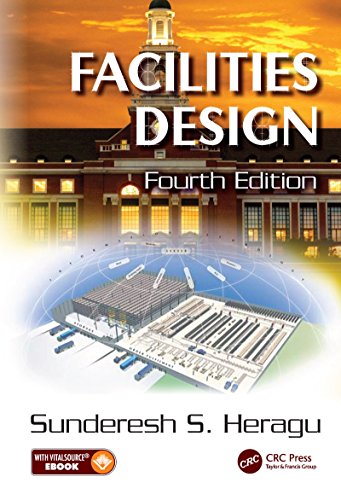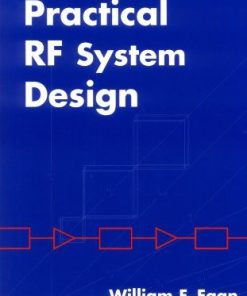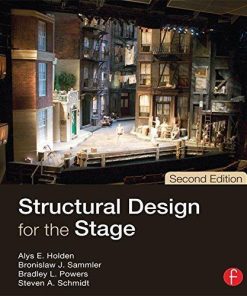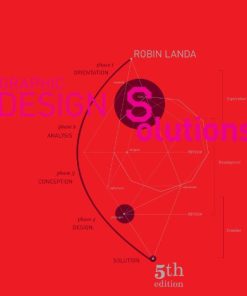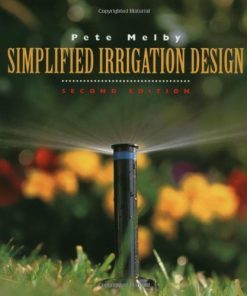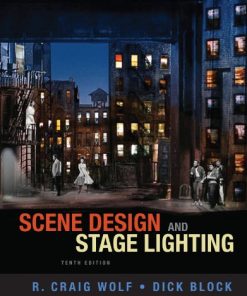Facilities Design – Ebook PDF Version
$50.00 Original price was: $50.00.$25.00Current price is: $25.00.
Facilities Design – Ebook PDF Version – Digital Instant Dowload.
Facilities Design – Ebook PDF Version – Digital Instant Dowload.
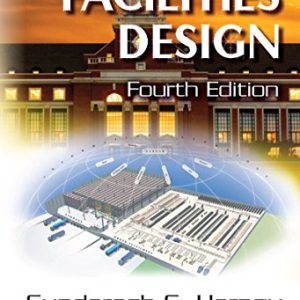
Product details:
- ISBN: 1498732895
- ISBN-13: 9781498732895
- Authors: Sunderesh S Heragu
Now in Its Fourth Edition: Your Guide to Successful Facility DesignOvercome design and planning problems using the fourth edition of Facilities Design. Dedicated to the proper design, layout, and location of facilities, this definitive guide outlines the main design and operational problems that occur in manufacturing and service systems, explains the significance of facility design and planning problems, and describes how mathematical models can be used to help analyze and solve them. Combining theory with practice, this revised work presents state-of-the-art topics in materials handling, warehousing, and logistics along with real-world examples that emphasize the importance of modeling and analysis when determining a solution to complex facility design problems.
Table contents:
Chapter One INTRODUCTION 3
1.1 Facilities Planning Defined 3
1.2 Significance of Facilities Planning 9
1.3 Objectives of Facilities Planning 12
1.4 Facilities Planning Process 13
1.5 Strategic Facilities Planning 18
1.6 Developing Facilities Planning Strategies 21
1.7 Examples of Inadequate Planning 24
1.8 Summary 26
References 27
Problems 28
Chapter Two PRODUCT, PROCESS, AND SCHEDULE DESIGN 30
2.1 Introduction 30
2.2 Product Design 32
2.3 Process Design 36
2.4 Schedule Design 47
2.5 Facilities Design 63
2.6 Summary 70
References 72
Problems 74
Chapter Three FLOW SYSTEMS, ACTIVITY RELATIONSHIPS, AND SPACE REQUIREMENTS 83
3.1 Introduction 83
3.2 Flow Systems 84
3.3 Material Flow System 88
3.4 Departmental Planning 97
3.5 Activity Relationships 113
3.6 Space Requirements 119
3.7 Summary 129
References 129
Problems 131
Chapter Four PERSONNEL REQUIREMENTS 137
4.1 Introduction 137
4.2 The Employee–Facility Interface 138
4.3 Restrooms 146
4.4 Food Services 151
4.5 Health Services 156
4.6 Barrier-Free Compliance 157
4.7 Office Facility Planning 160
4.8 Summary 170
References 170
Problems 171
Part Two DEVELOPING ALTERNATIVES: CONCEPTS AND TECHNIQUES 173
Chapter Five MATERIAL HANDLING 175
5.1 Introduction 175
5.2 Scope and Definitions of Material Handling 176
5.3 Material Handling Principles 179
5.4 Designing Material Handling Systems 181
5.5 Unit Load Design 186
5.6 Material Handling Equipment 204
5.7 Estimating Material Handling Costs 209
5.8 Safety Considerations 210
5.9 Summary 212
References 212
Problems 213
Appendix 5B Material Handling Equipment 215
Chapter Six LAYOUT PLANNING MODELS AND DESIGN ALGORITHMS 292
6.1 Introduction 292
6.2 Basic Layout Types 294
6.3 Layout Procedures 296
6.4 Algorithmic Approaches 302
6.5 Department Shapes and Mail Aisles 342
6.6 Simulated Annealing and Genetic Algorithms 344
6.7 Multi-Floor Facility Layout 351
6.8 Commercial Facility Layout Packages 354
6.9 The Impact of Change 355
6.10 Developing Layout Alternatives 362
6.11 Summary 363
References 366
Problems 369
Part Three FACILITY DESIGN FOR VARIOUS FACILITIES FUNCTIONS 383
Chapter Seven WAREHOUSE OPERATIONS 385
7.1 Introduction 385
7.2 Missions of a Warehouse 387
7.3 Functions in the Warehouse 389
7.4 Receiving and Shipping Operations 391
7.5 Dock Locations 414
7.6 Storage Operations 415
7.7 Order Picking Operations 432
7.8 Summary 443
References 443
Problems 444
Chapter Eight MANUFACTURING SYSTEMS 448
8.1 Introduction 448
8.2 Fixed Automation Systems 451
8.3 Flexible Manufacturing Systems 453
8.4 Single-Stage Multimachine Systems 456
8.5 Reduction in Work-in-Process 458
8.6 Just-in-Time Manufacturing 459
8.7 Facilities Planning Trends 467
8.8 Summary 468
References 469
Problems 470
Chapter Nine FACILITIES SYSTEMS 473
9.1 Introduction 473
9.2 Structural System Performance 474
9.3 Enclosure Systems 477
9.4 Atmospheric Systems 481
9.5 Electrical and Lighting Systems 490
9.6 Life Safety Systems 500
9.7 Sanitation Systems 505
9.8 Building Automation Systems 508
9.9 Facilities Maintenance Management Systems 510
9.10 Summary 510
References 511
Problems 511
Part Four DEVELOPING ALTERNATIVES: QUANTITATIVE APPROACHES 515
Chapter Ten QUANTITATIVE FACILITIES PLANNING MODELS 517
10.1 Introduction 517
10.2 Facility Location Models 518
10.3 Special Facility Layout Models 569
10.4 Machine Layout Models 577
10.5 Conventional Storage Models 580
10.6 Automated Storage and Retrieval Systems 608
10.7 Order Picking Systems 627
10.8 Fixed-Path Material Handling Models 642
10.9 Waiting Line Models 671
10.10 Simulation Models 701
10.11 Summary 705
References 705
Problems 709
Part Five EVALUATING, SELECTING, PREPARING, PRESENTING, IMPLEMENTING, AND MAINTAINING 743
Chapter Eleven EVALUATING AND SELECTING THE FACILITIES PLAN 745
11.1 Introduction 745
11.2 Evaluating Facilities Plans 748
11.3 Selecting the Facilities Plan 802
11.4 Summary 803
References 803
Problems 804
Chapter Twelve PREPARING, PRESENTING, IMPLEMENTING, AND MAINTAINING THE FACILITIES PLAN 807
12.1 Introduction 807
12.2 Preparing the Facilities Plan 807
12.3 Presenting the Facilities Plan 831
12.4 Implementing the Facilities Plan 834
12.5 Maintaining the Facilities Plan 836
You may also like…
Uncategorized
Uncategorized
Uncategorized


